한식 읽기 좋은 날
Introducing the ‘Hansik Industry Classification System’
Infographic News
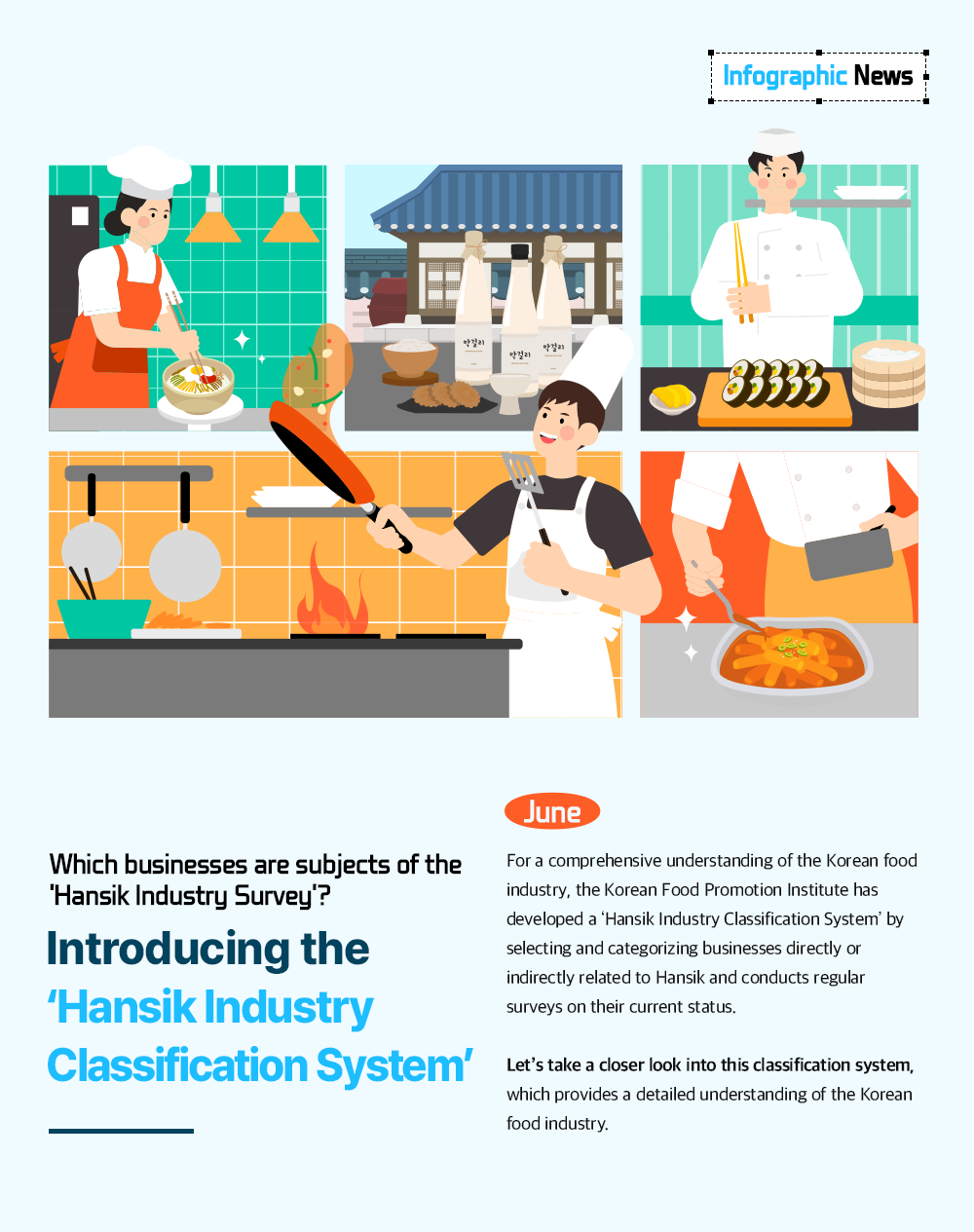
The recent surge in popularity of Hansik, observed worldwide, is significantly impacting South Korea's economy. Notably, not only is the Korean dining-out industry flourishing, but also the market for related manufacturing sectors like meal kits is expanding. This growth underscores the necessity to evaluate business scale, employment numbers, and sales figures. Consequently, the Korean Food Promotion Institute is crafting a classification system for the Korean food industry, encompassing dining-out, food and beverage manufacturing, educational services, and more. Additionally, it is conducting surveys to gauge the present state of the Korean food industry. Presented here is an overview of the ‘Hansik Industry Classification System’ designed for statistical analysis.

Q: What is the 'Hansik Industry Classification System'?
The 'Hansik Industry Classification System' is a classification reorganized from relevant classification items of the standard industrial classification (SIC) to comprehensively understand the Korean food industry.
* Standard Industrial Classification System: It systematically categorizes business activities primarily performed by production units (enterprises, businesses) based on their similarities. Apart from statistical purposes, it is also utilized as a standard for determining industrial sectors in industrial policy-related laws and regulations.
Q. What is the 'Hansik Industry Classification System' used for?
The 'Hansik Industry Classification System' was developed to broaden the Korean food industry's scope beyond its traditional focus on the restaurant sector to also encompass the food and beverage manufacturing industry. Industries closely linked to Hansik both directly and indirectly were identified and categorized into the broader or narrow sense of the Hansik industry and sectors aligning with the narrow sense of the industry were chosen as subjects for the Hansik Industry Survey.
Q: What is the composition of the 'Hansik Industry Classification System'?
The system comprises a total of 51 industries, based on the detailed classification criteria of the standard industrial classification. These include the Hansik restaurant business, beverage business, food and beverage manufacturing business, among others.
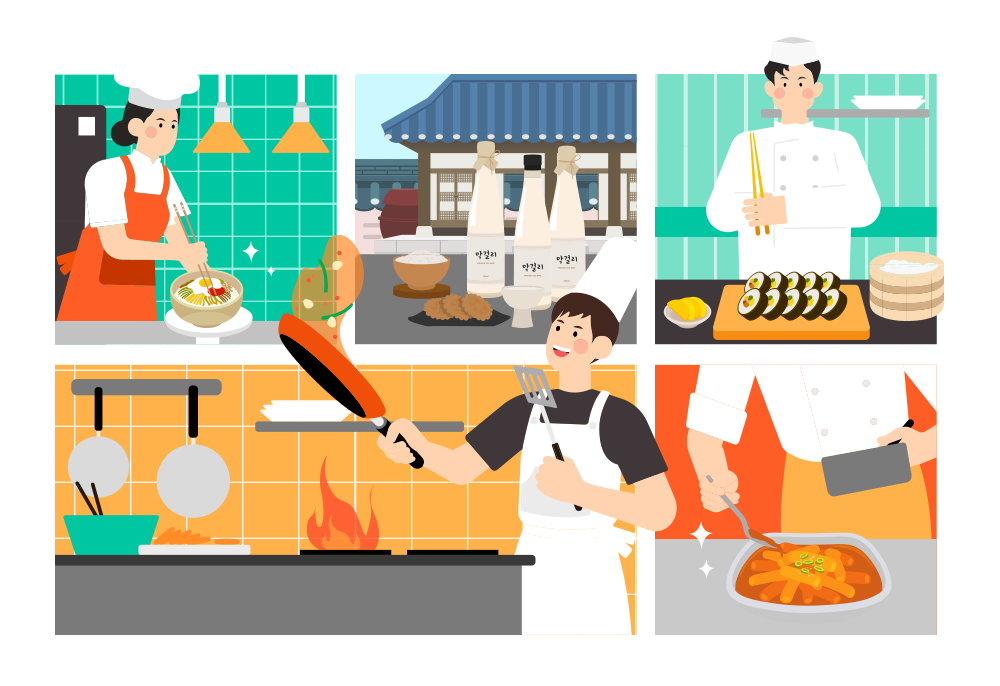
Overview of the 'Hansik Industry Classification System' (The Narrow sense of the Hansik Industry)
The 'Hansik Industry Survey,' conducted by the Korean Food Promotion Institute, targets a total of 51 industries in the narrow sense of the Hansik industry, which encompasses industries directly involved in the production and preparation of Hansik food or food products, as well as those with high levels of direct or indirect association (such as the restaurant industry and food and beverage manufacturing).
These 51 industries include: ▲Korean Restaurant Business (8 types) ▲Korean Beverage Business (2 types) ▲Korean Food Manufacturing Business (27 types) ▲Korean Beverage Manufacturing Business (5 types) ▲ Hansik Educational Service (6 types) ▲Hansik Arts and Leisure-related Service (3 types).
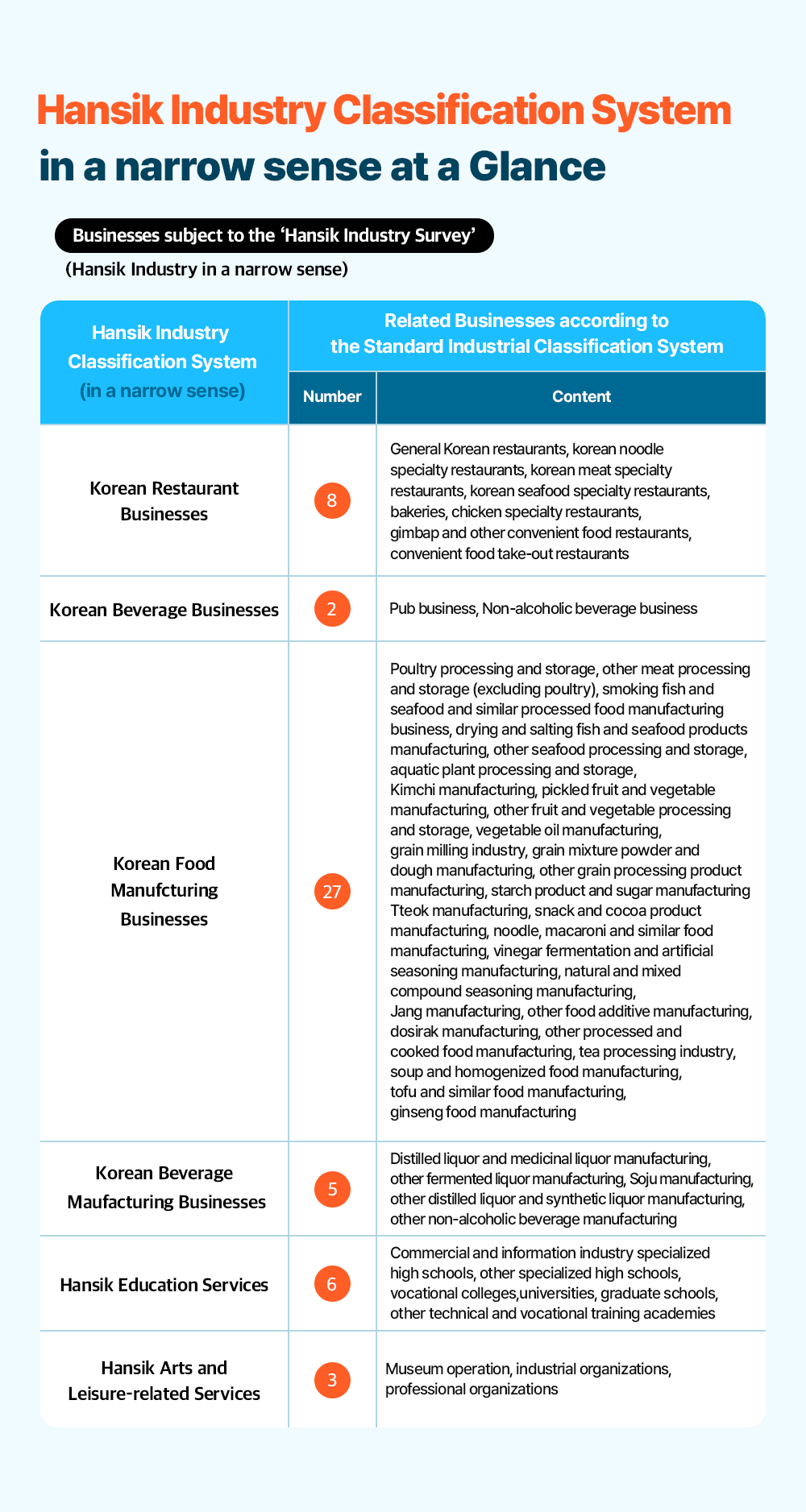
Hansik Industry Classification System① Hansik Restaurants Business (8 types)
First, within the category of Hansik restaurants, there are various types including general Korean restaurants offering dishes like baekban (combination meals), juk (porridge), and jjigae (stew); specialized noodle restaurants selling dishes like naengmyeon (cold buckwheat noodles) and guksu (noodles); specialized meat restaurants focusing on grilled meat and serving yukhoe (beef tartare); and seafood restaurants offering dishes like hoe (raw fish) and grilled fish, representing the most typical forms of Hansik dining establishments. Additionally, businesses specializing in Hansik snacks like tteok (rice cakes) and yakgwa (honey cookies), as well as specialty restaurants offering yangnyeom chicken (seasoned fried chicken) and others, and various other fast food outlets including snack bars and takeout shops that offer steet and fast-food such as gimbap, are also classified under Hansik restaurants business.
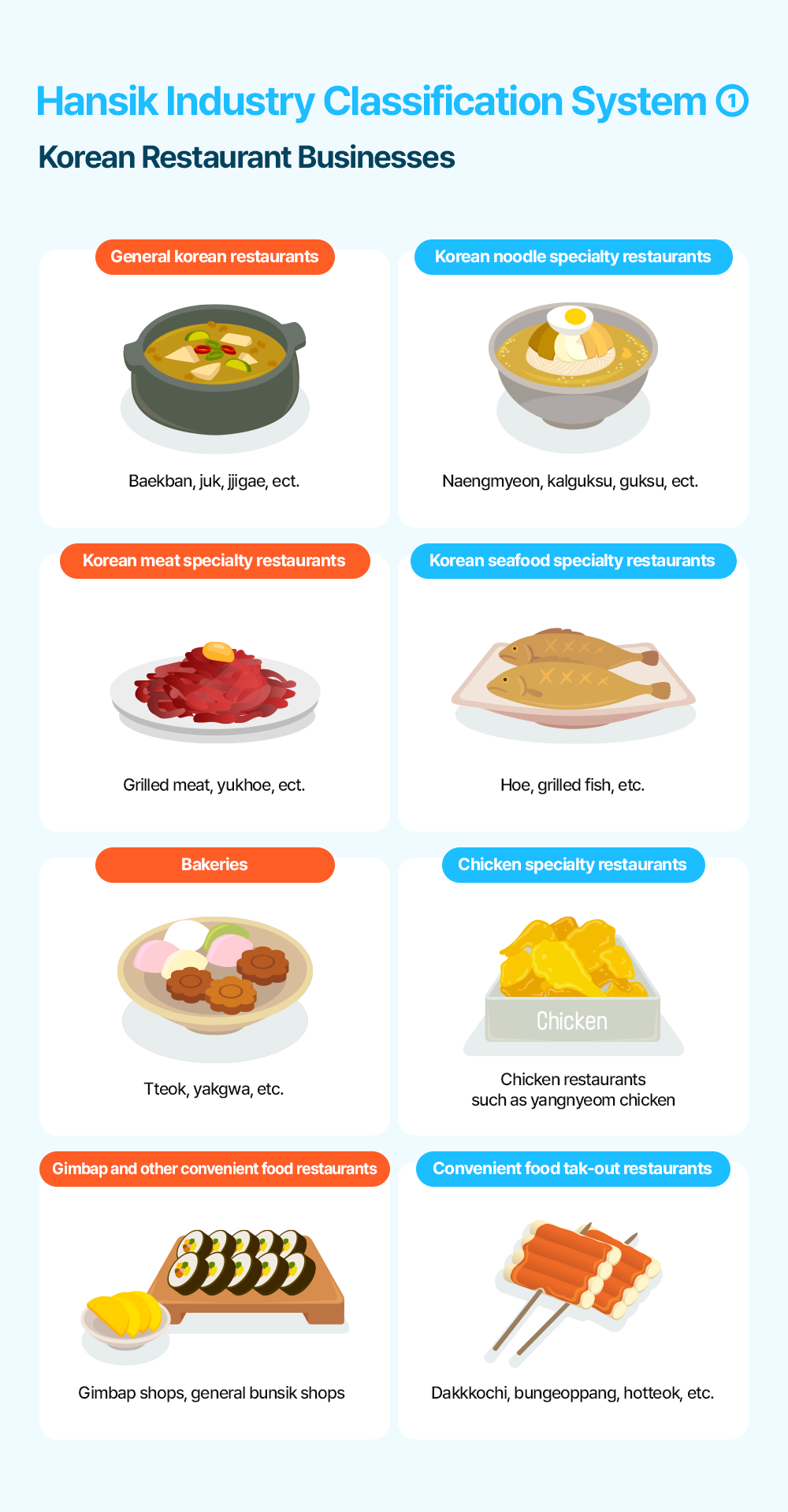
Hansik Industry Classification System② Korean Beverage Business (2 types)
Hansik beverage businesses encompass alcoholic and non-alcoholic beverage establishments. Under alcoholic beverage establishments, there are traditional taverns including daepotzip and sunsulzip as well as local (regional) taverns. Non-alcoholic beverage establishments include businesses specializing in preparing and offering beverages like ssanghwacha (medicinal herb tea) and saenggangcha (ginger tea), either for on-site consumption or for take-out.
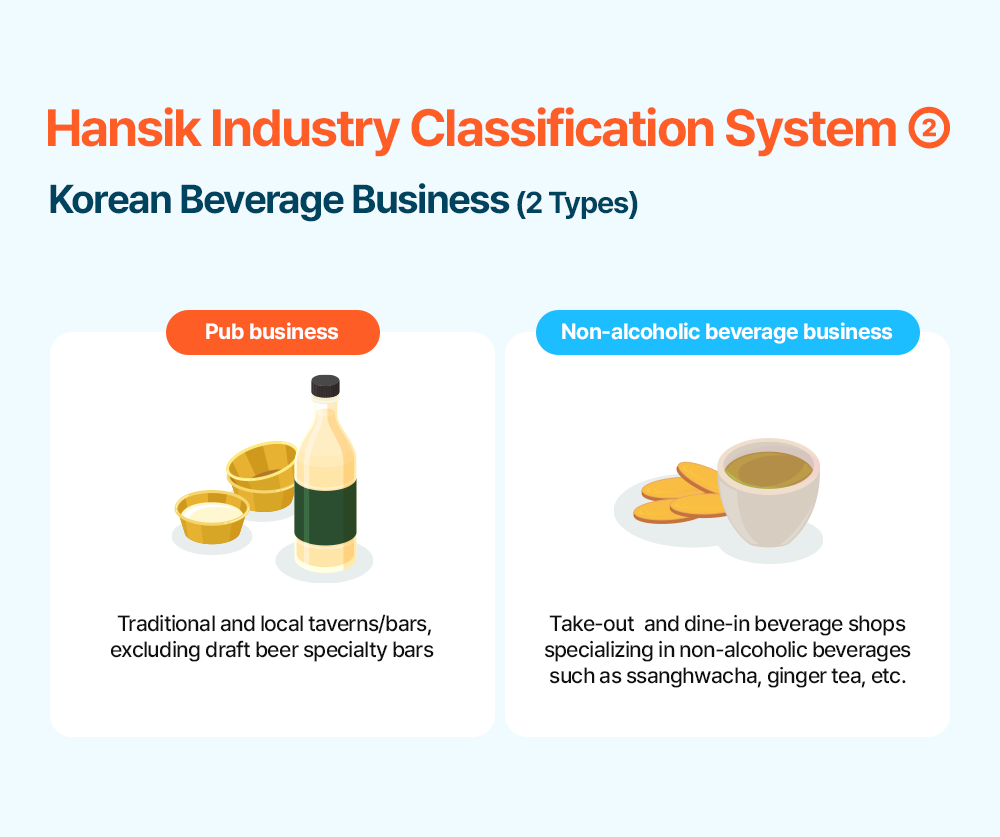
Hansik Industry Classification System③ Korean Food Manufacturing (27 types)
Korean food manufacturing can be broadly categorized into meat, seafood, kimchi and fruit/vegetable products, plant-based oils, grains, and other food sectors.
A closer examination of the detailed classifications reveals that meat processing and preservation comprise two sectors, including poultry and other meat processing. Seafood is divided into four sectors based on cooking methods and distinctions between aquatic animals and plants. Kimchi and fruit/vegetable products are categorized into kimchi manufacturing, pickled fruit/vegetable product manufacturing, and other methods of fruit/vegetable product manufacturing. Plant-based oil manufacturing, which includes sesame oil and perilla oil production, also falls under food manufacturing. Grain-related sectors are divided into four categories based on processed product types. Other food sectors encompass 13 business areas including tteok (rice cake) manufacturing, vinegar, fermentation and artificial seasoning manufacturing, and jang (traditional Korean sauce) manufacturing, among others.
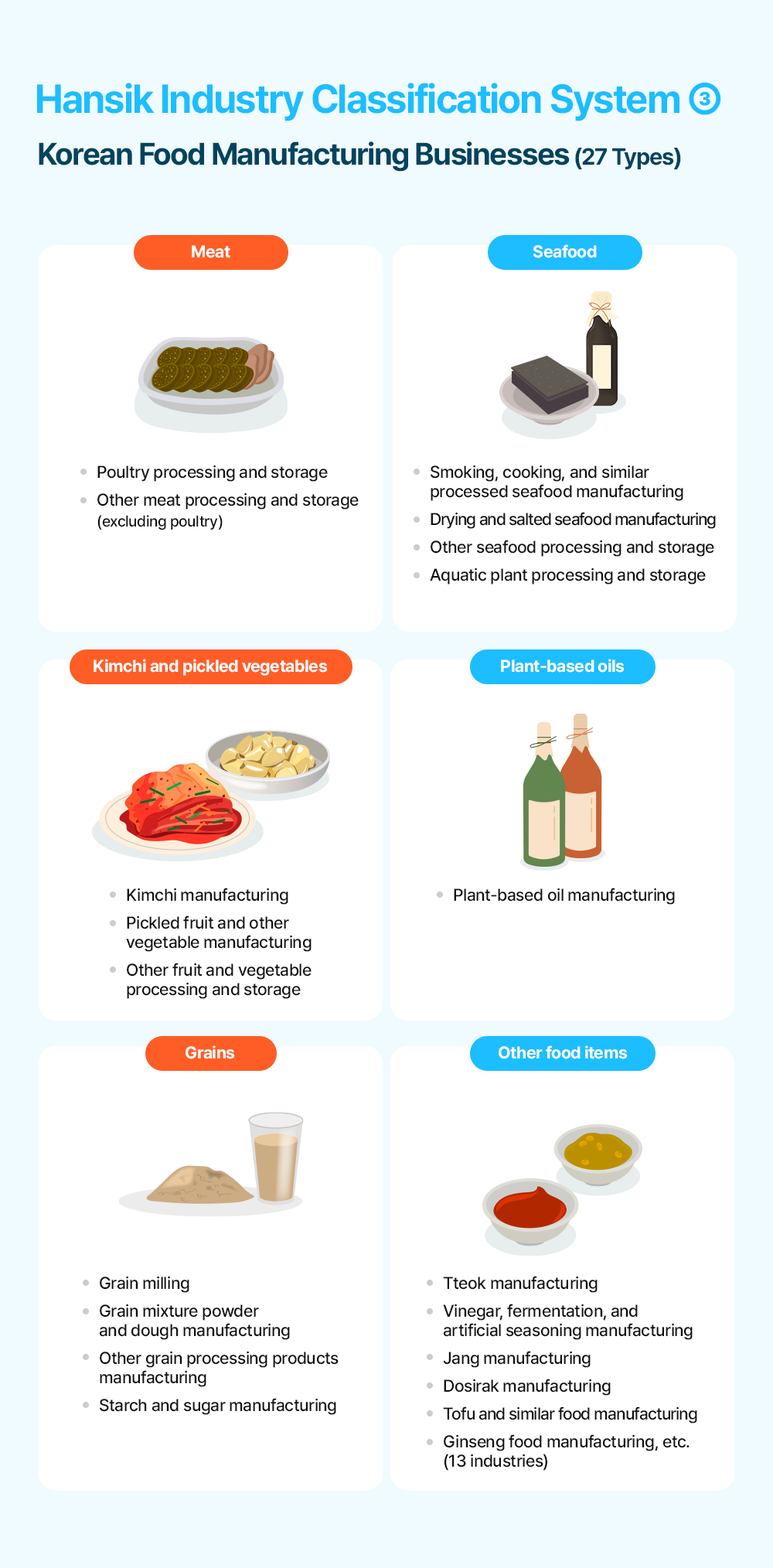
Hansik Industry Classification System④ Korean Beverage Manufacturing (5 types)
Korean beverage manufacturing includes industries that produce grain-based fermented liquors such as takju (unrefined rice wine) and yakju (refined rice-based medicinal alcohol), which include makgeolli (unrefined rice wine), minsokju (regional liquor), and dongdongju (unfiltered makgeolli); fruit-based fermented beverages such fruit wines; and cheongju (refined rice wine), among others. Soju manufacturing includes varieties like Andong Soju and synthetic soju. Other distilled and synthetic beverage manufacturing includes alcoholic beverages such as ogapiju (acanthopanax senticosus wine), insamju (ginseng wine), and maesilju (green plum wine). Additionally, non-alcoholic beverage manufacturing such as gamju (filtered version of sikhye), sikhye (sweet rice punch with rice particles), and hongsam (red ginseng) drinks are included in this category.
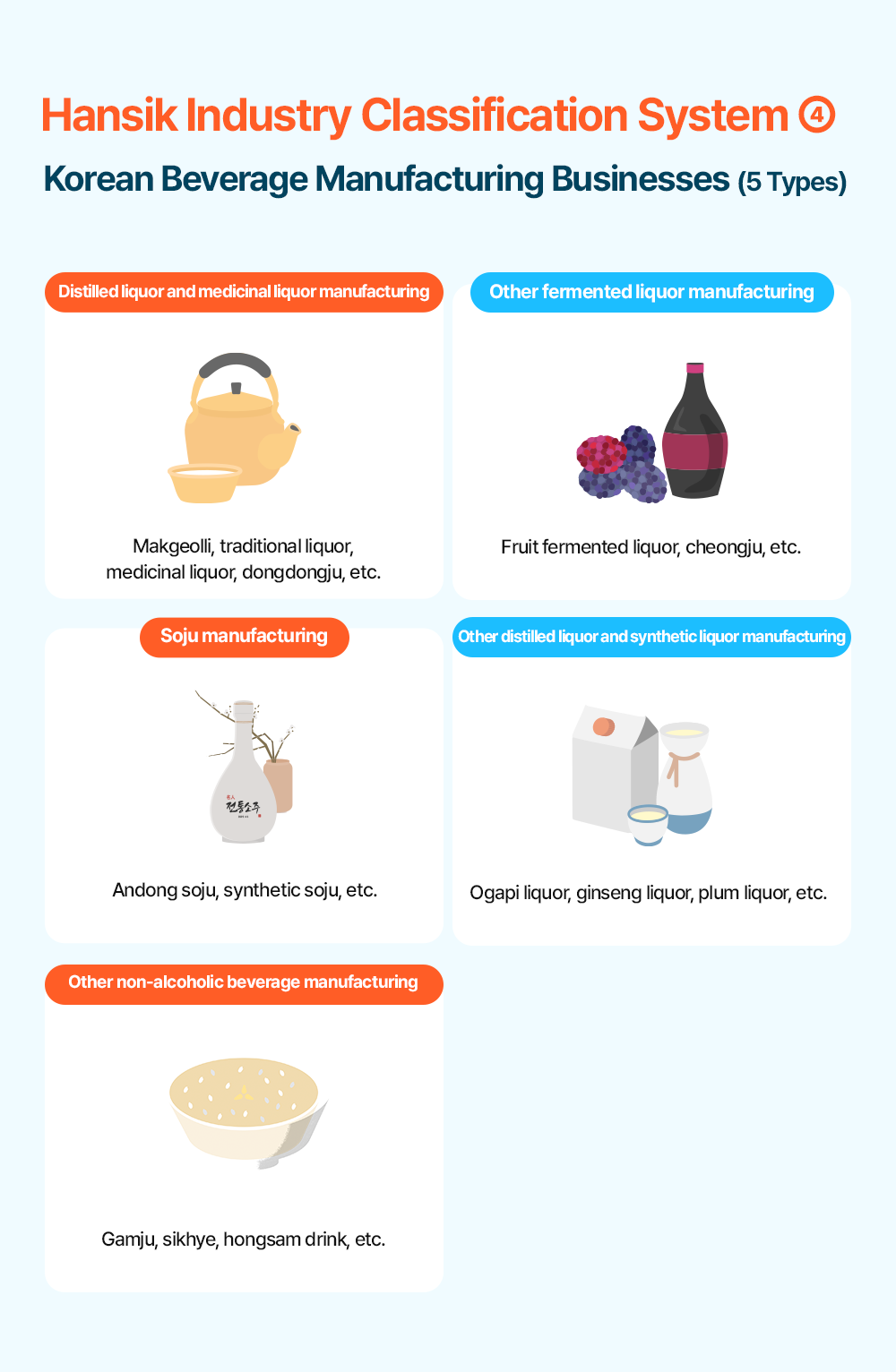
Hansik Industry Classification System⑤
Hansik Educational Services (6 types) and Hansik Arts and Leisure Services (3 types)
Hansik educational services include six types of industries: formal educational institutions at the secondary and high school levels related to Hansik, employee training centers, vocational and technical training institutes, other educational institutions, and educational support services. Hansik arts and leisure services comprise three types: services related to Hansik museums and experiential activities, creative and artistic services related to Hansik, and associations and organizations dedicated to promoting the interests of businesses and members within Hansik-related industry sectors.
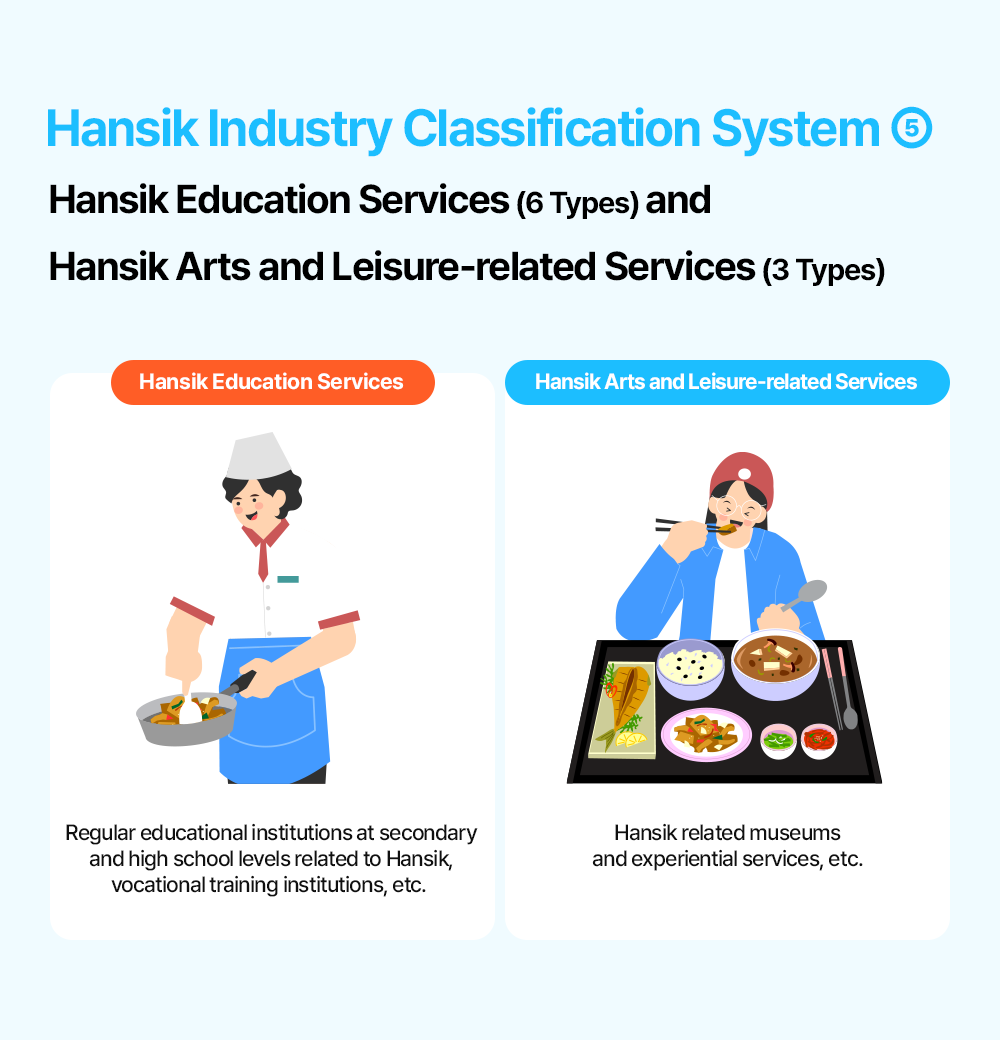

 한국어
한국어
 English
English






